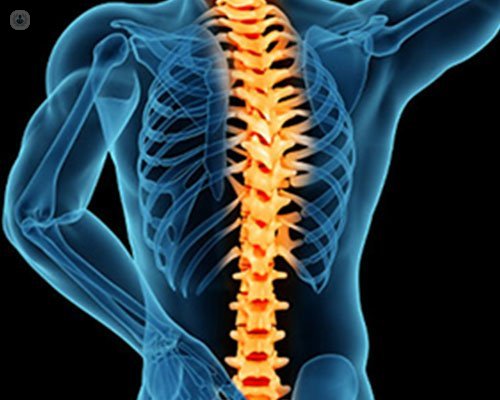Radiofrequency ablation (rhizotomy) for spine and back pain management
Written by:Radiofrequency ablation, also known as rhizotomy, is a non-surgical procedure used to reduce chronic pain symptoms that are related with arthritis of the spine, disc herniation and disease, and severe lumbar (lower back) pain.

The radiofrequency ablation procedure reduces pain in a specific area by sending an electrical current, produced by a radio wave, to a small area of nerve tissue. Using an endoscope, electrodes are introduced to the spaces between the vertebrae discs. The electrical current deliberately damages the nerves to stop them from sending pain signals to the areas where the patient usually feels pain. The procedure has been nicknamed "the burning procedure" because of the heat.
How to prepare for radiofrequency ablation (rhizotomy) treatment
A rhizotomy is performed under local anaesthetic. Normally, when sedation is required, it is recommended that the patient doesn’t eat anything within six hours before the procedure. Patients with diabetes must adjust the dosage of their insulin. Patients will need someone to drive them home after the procedure.
What happens during a radiofrequency ablation procedure?
The lumbar spine is a complex structure and the procedure starts between L4-L5 (the two lowest vertebrae) on the left side. To ensure the electrode probe is in the correct place, the surgeon checks both sensation (tingling, tightness or pressure) and motor reaction (movement). Motor reaction should only be felt in the back and not in the leg. If there is motor sensation in the leg, the probe will be repositioned. Once the probe is satisfactorily located, the tip is heated up to 800 degrees C, causing a heat lesion on the nerve. The same process is then carried out on the L4 and L5 right vertebrae and the L5-S1 left. Usually, this technique lasts about 15-20 minutes.
After a radiofrequency ablation (rhizotomy) procedure
The patient is able to resume normal activity immediately, although advised to take it easy for 3-4 days. Betadine® (antibiotic cream) is prescribed and is to be applied topically to the treated area for 2-3 days. Pain may increase for the first week after the procedure but the patient usually has full relief from pain within a month and successful rhizotomies can last longer than steroid block injections. The patient returns to the consultant one month after the procedure to evaluate the efficacy of the treatment.


